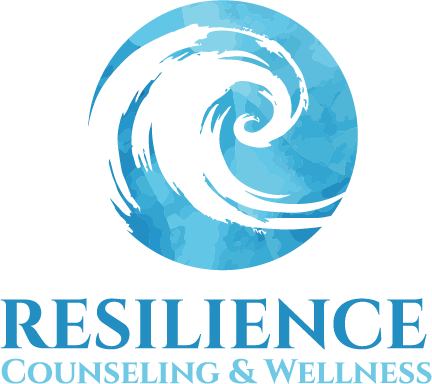Takeaway: Internal Family Systems (IFS) exercises can help you connect with your inner world, gain clarity, and bring more self compassion to the parts of you that feel stuck, reactive, or overwhelmed. Whether you’re working with a therapist or exploring on your own in a quiet place, these practices offer powerful tools for healing from the inside out—supporting your personal growth, reducing inner conflict, and helping you build trust within your internal system.
Have you ever found yourself stuck in recurring patterns or caught in cycles of inner conflict, despite your best efforts at self-improvement? Many of us struggle with deeply personal issues rooted in our internal system—sometimes manifesting as the inner critic, protective parts, or reactive emotions. The Internal Family Systems model (IFS model) offers practical exercises and free resources designed to foster self leadership, self compassion, and a deeper understanding of your inner world.

What Are IFS Exercises?
IFS exercises are structured practices designed to help you:
- Identify and understand your internal parts
- Unblend from intense emotions and protective parts
- Access Self energy—the qualities of your true self
- Build trust with manager parts, firefighter parts, and wounded sub-personalities
- Support the healing process through connection and care
These practices can be done in a quiet place at home or with the guidance of a therapist. They’re not about controlling or fixing “bad parts,” but about listening to all the parts with compassion.
How to Choose the Right IFS Exercise
Before diving in, take a few deep breaths and ask yourself:
- Am I feeling grounded enough to explore my inner system?
- Do I have space to reflect without judgment?
- Would I benefit from a therapist’s support right now?
Solo IFS exercises are ideal for gentle exploration and building awareness in your day to day life. Therapist-guided exercises are best when parts feel increasingly extreme, carry trauma, or relate to challenges like substance abuse, eating disorders, or binge eating.
4 IFS Exercises You Can Try on Your Own
Parts Mapping
Create a visual or written map of your inner parts. Start by listing different parts that show up often—like the inner critic, the high achiever, the avoider, or the anxious part. For each part, note:
- Its role or job
- What it protects you from
- When it tends to show up
- How it feels in your body
This exercise helps you identify and externalize your internal system, making space for deeper connection and clarity.
Getting to Know a Target Part
Choose one target part that feels active today. Take a few deep breaths, close your eyes, and invite it to share:
- What do you want me to know?
- What are you afraid would happen if you didn’t do your job?
- How old do you feel?
- What do you need from me right now?
You’re not trying to control or fix the part—just listen. Often, protective parts soften when they feel seen and heard.
Reflection Tip: Journal the conversation. You might be surprised by what comes through.
Unblending
When a part feels intense—like shame, panic, or anger—it may be “blended” with your Self. To unblend:
- Pause and notice the emotion
- Say internally: “I see you. Can you step back so I can get to know you?”
- Breathe and wait. Often, the part will soften or shift
Unblending creates space for your core Self to lead with self compassion and clarity. It’s not about pushing the part away—it’s about creating enough distance to relate to it.
Self-Led Journaling
Write from the voice of a part, then respond from your Self. For example:
- Part: “I’m terrified you’ll fail. That’s why I keep pushing you.”
- Self: “Thank you for trying to protect me. I want to understand your fear.”
This dialogue builds trust and helps parts feel less alone. You can also journal about how parts interact with each other—like a manager part trying to silence a wounded exile.
Try the “Path Exercise”: Imagine walking down a path with your part. What do you notice? What does the part want to show you? This visualization can deepen your connection and reveal unmet needs.
3 IFS Exercises Best Done with a Therapist
The 6Fs
This structured process helps you engage with a part step-by-step:
- Find the part
- Focus on it
- Flesh out its qualities (voice, emotion, body sensation)
- Feel toward it—what’s your attitude?
- Befriend it with curiosity and compassion
- Explore its Fears about letting go of its role
This exercise builds trust and opens the door to healing. Many manager parts carry deep fears about what might happen if they step aside.
Why we recommend doing this with a therapist: A therapist provides a safe, supportive environment to help you navigate complex emotions and unexpected reactions. Their presence ensures you remain grounded and compassionate, especially if you encounter difficult or vulnerable parts of yourself during the process.
Guided Meditation for Self-to-Part Connection
Your therapist guides you in connecting with a part through visualization. You might imagine sitting across from the part, asking it questions, and offering compassion. This helps you access Self energy and deepen the relationship.
Therapists often help you stay grounded and unblended, especially when parts carry trauma or intense emotion.
Somatic Parts Mapping & Body Scan
IFS isn’t just cognitive—it’s deeply embodied. In this exercise, your therapist helps you notice where parts live in your body. You might feel:
- Tightness in the chest (anxious part)
- Numbness in the legs (avoidant part)
- Heat in the face (angry part)
Bringing awareness to these sensations helps you connect with parts more fully and integrate healing on a somatic level. A body scan can also help you locate various aspects of your system that need attention.
Whole Body Awareness Tip: As you scan, notice how your whole body responds to different parts. Are there areas of tension, warmth, or numbness? This can reveal where healing is needed most.
When to Seek Professional Support
IFS can stir up deep emotions. If you feel overwhelmed, stuck, or unsure how to proceed, working with a therapist can provide safety and guidance. You don’t have to navigate your inner world alone.
Therapists trained in the Internal Family Systems (IFS) approach can help you:
- Unblend from intense parts
- Access Self energy
- Heal wounded exiles
- Build trust within your internal family
Final thoughts: Start Your IFS Healing Journey Today
Whether you’re journaling at home or exploring parts in therapy, these IFS exercises offer a path toward self acceptance, clarity, and well being. Try one today—and notice what shifts.
At Resilience Counseling and Wellness, our team of licensed therapists and mental health professionals have extensive training in Internal Family Systems therapy—also called IFS therapy. We’re dedicated to supporting personal growth and healing trauma using evidence-based IFS exercises, both in day-to-day life and within therapy sessions. Whether you want to explore your internal family of parts alone or with professional guidance, the IFS model offers a transformative healing process for your whole body and mind.
Interested in going deeper? Explore our free resources, connect with a therapist, or learn more about the Internal Family Systems model and how it can support your healing journey.

